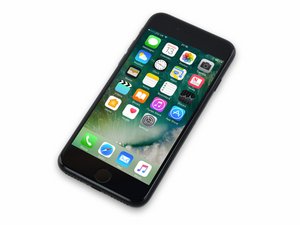The proper way to test the proximity sensor is to make a call and then obscure the sensor (next to the front camera). You can also do this when doing a voice recording.
Doing a housing change introduces a ton of variables. You could have damaged or torn a flex in the process so you will need to inspect everything very closely.
You also have symptoms of the Audio IC issue (long boot, audio issues). This can happen seemingly out of nowhere and usually follows a reboot of an affected device or following a repair when the logic board is subjected to some flexing. Once rebooted, the phone exhibits symptoms that were never present before.
On the iPhone 7, the fault line runs along the top of the SIM card reader and affects the Baseband CPU and Audio IC. Any short copper traces running perpendicular to the fault line while connecting to micro-BGA pads, is subject to failing.
On the Audio IC, this particularly affects the C12 pad/trace although there are 4 pads/traces along the fault line. Of those four, the C12 pad (I2S_AP_TO_CODEC_MCLK) is the most critical as it is a communication protocol line between the CPU and the Audio IC.
Here are the typical symptoms, as collated by the repair community:
- Voice Memos app / Loudspeaker on call - greyed out
- Siri doesn’t hear you / Caller can’t hear you
- Most other Audio related issues that aren’t solved by modular replacements
- Long boot times (3-5 minutes)
- iTunes detects the phone but stuck on the Apple Logo
This is a repairable problem but it requires a micro-soldering repair. Although it can be a routine repair for an experienced tech, it can go sideways very quickly as the Audio IC is directly opposite the underfilled Baseband CPU. An unqualified tech can apply too much heat and cause massive problems. So do your due diligence.


 15
15  289
289  806
806
2 opmerkingen
Does the proximity sensor and light sensor still function? If it doesn't, replace the front camera flex. If it does still work, you could try to replace the lightning port flex and see if that works.
door Mika S
I just tested the proximity sensor using FaceTime, as far as I can tell it isn't working, the front camera and ear piece are just fine though. I've ordered both, a new charging dock and a new flex cable, I'll update this thread if I manage to fix it.
door M6OKF